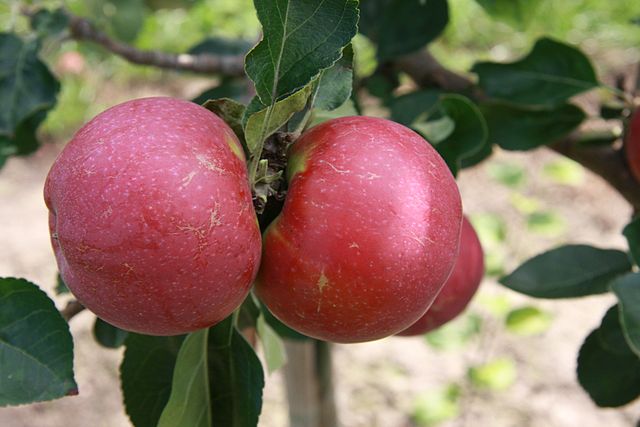Pruning an old apple tree is essential for maintaining its health, shape, and fruit production. The best time to prune an old apple tree is during late winter to early spring, while the tree is dormant but just before new growth begins. Here are some key considerations for pruning an old apple tree:
1. Late Winter to Early Spring:
- The ideal time for pruning an old apple tree is typically in late winter to early spring, before new buds start to swell. Pruning during this dormant period minimizes stress on the tree and allows you to make clean cuts without causing harm to the developing foliage and flowers.
2. Pruning Goals:
- Before you begin pruning, determine your goals. Prune to remove dead, diseased, or damaged branches, as well as any branches that are crossing or rubbing against each other. Additionally, thin out the canopy to improve air circulation and sunlight penetration. Encourage a well-balanced shape with an open center to allow for better fruit production.
3. Tools:
- Use sharp, clean pruning tools such as hand pruners, loppers, and a pruning saw. Make clean cuts to avoid unnecessary damage to the tree.
4. Prune Conservatively:
- Old apple trees may have a weakened or compromised structure. When pruning, it’s important to be conservative and not remove more than one-third of the tree’s canopy in a single year. Over several years, you can gradually reshape the tree.
5. Deadwood Removal:
- Begin by removing any dead, diseased, or broken branches. These branches can serve as entry points for pests and diseases.
6. Crossing and Overlapping Branches:
- Eliminate branches that are crossing, rubbing, or growing inwards toward the center of the tree. This can improve airflow and reduce the risk of disease.
7. Water Sprouts and Suckers:
- Remove water sprouts (vigorous vertical shoots) and suckers (shoots emerging from the base of the tree) to redirect the tree’s energy into fruit production.
8. Scaffold Branches:
- When shaping the tree, focus on maintaining a strong scaffold structure with well-spaced branches that radiate out from the central leader. Remove crowded branches or those that are growing vertically.
9. Step Back and Assess:
- Regularly step back and assess the tree’s overall structure as you prune. This will help you maintain a balanced and open canopy.
10. Aftercare: – After pruning, it’s essential to properly dispose of pruned branches and clean your tools to prevent the spread of disease. Consider applying a dormant spray to protect the tree from pests and diseases.
11. Follow-Up Pruning: – Depending on the condition of the tree, additional pruning may be necessary in subsequent years to continue shaping and rejuvenating the apple tree.
Old apple trees can benefit significantly from thoughtful and careful pruning. While it may take a few years to fully restore and reshape the tree, the effort is often rewarded with improved fruit production and a healthier, more aesthetically pleasing tree.
Annually pruned apple trees bring a rich harvest. Through maintenance pruning, the tree can renew itself (older branches hardly bear fruit) and the bearing fruit shoots receive enough light to ripen fruit. In addition, you prevent diseases.
Experts argue a bit about when the best time is. Some say in late winter (late January to late February), before new shoots begin. Others think an autumn pruning from the end of October / November is good.

In principle, pruning in the fall is less favorable than in late winter, because the new shoots are stronger, and therefore the formation of water sprouts higher. (The variety of apple trees plays less of a role here. It depends on the grafted rootstock whether a tree is weak or strong growing).
For your old tree, you may want to have a professional come in this year (gardener or nurseryman) to do a thorough thinning and maintenance pruning once. (It is not so easy for a layman to prune a totally overgrown old fruit tree without giving the poor plant a radical pruning that will seriously affect the tree’s appearance). Of course, you can also have an experienced garden owner show you what’s important when pruning a tree.
Our tip: Anything that crosses, grows over each other and faces inward into the tree can go. Likewise, shoots that point steeply upward. Basically, cut back by a third, depending on the space available.
In the summer you can exceptionally prune again (after the harvest) and then, in the next late winter you supply the tree alone without experts.

